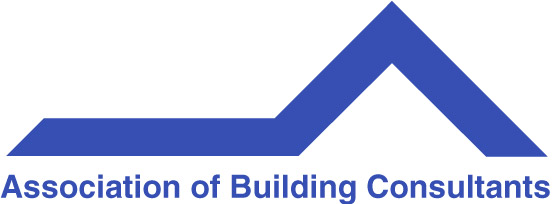Swimming pool safety submission to government

Association of Building Consultants Inc.
Submission on Proposed legislative changes Swimming Pool Safety Requirements
Background to this submission
Members of the Association of Building Consultants (“the Association”) include a wide range of specialists and consultants in the building industry, providing inspection and advisory services to the South Australian public and industry.
Members of the Association have had long experience in inspecting residential premises, both for pre-purchase inspections and for inspections during and after new building works. In the last two decades, swimming pools have become more prevalent in residential building projects and as such, members have had the opportunity to inspect many types of pools and associated child-safety barriers.
This background of practical, on-site experience has given members a unique and valuable insight into the range of issues that can and do arise. This submission seeks to draw upon that wealth of practical experience to offer commentary on the proposed new regulatory regime in South Australia.
Areas of concern
The Association’s view is that pool access safety problems fall into at least 6 main areas:
1. Pools that have been constructed without approval under the Development Act 1993. These are typically spas “on the back porch”, smaller above ground pools and old pools with poor (or no) access control. These are highly problematic and dangerous to small children.
2. A lack of appropriate maintenance by the occupier of a barrier system that would have otherwise complied. For example, gates require maintenance, particularly on reactive soil sites, to ensure that they remain self closing and self-latching.
3. Barrier systems that are rendered ineffectual by poor property management. Occupiers who place climbable objects near the gate latch or barrier, such as chairs, pot plants, cubby houses, playground equipment and the like may unwittingly cause the barrier system to be useless.
4. Barrier systems that have been improperly constructed (or not constructed at all) and thereby fall short of the requirements of the Australian Standards. These issues can arise due to site slopes and levels including gaps at bases and edges of barriers. In addition, climbable parts, a lack of strength and rigidity of components and a lack of access control from the house can be factors causing non compliance. In January 2010, a recently constructed house without any barrier or gate between the house and the pool caused the death of a toddler (see the recent Coroner’s report re Bryce Eddleston).
5. Shortcomings in safety requirements embedded in the "old Standards" that applied to pools constructed pursuant to a Development Approval dated between 30/6/1993 and 2/12/2010. In particular, these pools are permitted to include external self closing house doors which require careful ongoing maintenance to remain effective.
6. A lack of a robust inspection and certification system in respect of pools of any age.
Discussion
The experience of Association of Building Consultants members is that there is poor understanding of the safety requirements on the part of home owners. Anecdotally, the members report that this is due in part to the complexities associated with differing requirements related to the Development Approval date of pools. There is a lack of detailed technical information published by the State Government for pool owners to refer to. There have been printed brochures in recent years, but these are often superseded and out of date.
The SA government legislated in 2008 for upgrading of swimming pool safety in certain situations. Unfortunately, there have been some instances where pool safety inspections subsequent to that time have failed to pick up non-compliance issues. The government's paper recognises this, but lacks the emphasis that the issue needs. The Association has been aware that such inspections have been at the "budget price" end of the inspection market and have been carried out by persons who are not in the normal business of conducting building and related inspections.
The Association of Building Consultants is concerned that several of the proposals in the discussion paper seek to place responsibility on Councils without commensurate funding arrangements. A similar situation recently occurred with roof truss framing inspections, where some Councils were not in a position to do justice to the role. Moreover, Councils’ role in building work inspections has decreased over the years, due to liability issues and financial pressures. In the main, resource application in relation to development work is more in the planning area, with much of the assessment of Building Rules compliance being dealt with by the private sector and little being done in the way of actual site inspections by Local Government.
Placing additional onus on local government, as the State government appears to propose in other areas including health surveying and environmental protection, is not sustainable without additional resources. Notwithstanding this comment the Association supports the principle of Councils taking on the policy and regulatory roles as set out in the discussion paper. However, the Association considers that Councils have not been able to give adequate priority to existing inspection roles, reportedly due to funding realities. The issue of swimming pool safety is too important to create more cracks in the system that can ultimately result in the deaths of young children.
Specific recommendations
The Association of Building Consultants recommends:
1. Abolishing the date for retrospective compliance with new standards (presently for pools with a DA date prior to 30/6/1993). The preferred system is for ALL pools, regardless of their age, to have compliant access controls by a future prescribed date – probably 3 years from the approval of a change in the legislation, to generally give time to achieve compliance (ie similar to Queensland). In the interim, any property with a pool/spa that is sold should have swimming pool safety and access control upgraded to current standards by the time of property settlement. There should be no exemptions, regardless of the circumstances.
2. Establishing minimum qualifications for swimming pool safety inspectors, Continuing Professional Development training requirements, as well as registration, an audit process and a code of practice. The latter may include disciplinary measures. Private inspectors would operate in the open market to provide compliance certification. Fees for inspections and issuing of certificates should not be limited or prescribed, but left to those who provide inspections and certification.
3. Mandatory registration of all pools (which includes spas and certain small above-ground pools, as well as the normally recognised swimming pools), but with an amnesty period for owners to get swimming pool safety and access controls up to standard or to have the pool/spa demolished or removed within a set time frame. Where this relates to a property transfer, the time frame would be prior to settlement.
4. A public relations campaign by the State Government to inform the public of the requirements for compliance. That campaign should include provision of details of all technical requirements for swimming pool access barriers, and should be published on the government web site.
5. Proposed resuscitation signage, including vigorous promotion of responsible supervision.
6. Penalties for non-compliance following receipt of a formal warning notice from local government after an inspection.
7. Requiring a current swimming pool safety compliance certificate to be provided to the purchaser as part of the vendor’s Form 1 Statement under the Land and Business (Sale and Conveyancing) Act 1995 (SA) when any property including a pool is sold. The legislation should be amended so that any director of a vendor that is also a corporate body remains liable for any non-compliance or false certification.
8. Establishing a requirement for regular (say four or five yearly) inspections of all swimming pools at owner’s cost and the production of a certificate of inspection evidencing ongoing compliance to local government.
9. Beyond the proposals in the discussion paper, the Association believes that it is possible to achieve compliance via the existing household insurance system. All household insurance policies incorporating public liability cover could be required to include a disclosure by the insured that there is a pool/spa on the property, and that the pool or spa is safety-compliant. Legislation could require insurers to collect and disseminate prescribed information on pools/spas and safety access to Local Government, which would maintain this information on a register, including all owner declarations of compliance and maintenance, or a current compliance certificate number.
10. Finally, the Association considers that the State Government should clearly set out any new requirements to conveyancers, the real estate industry, building surveyors and consultants, financial institutions and Councils as well as to the public at large. The provision of the information should go beyond posting details on the internet and should include ongoing mail outs to individuals in the industry and public information dissemination via the media. The present confusion in the community, including within the industries that are professionally involved in property transactions may be contributing to poor compliance. One example is post 30/6/1993 pools. Anecdotal evidence from Association members indicates that it is not uncommon for real estate agents to tell purchasers not to be concerned about the cost of bringing a pool into compliance after purchase because the vendor is obliged under the legislation to have the pool compliant before settlement date. As the present legislation only applies to pre 30/6/1993 pools, this information from real estate agents is incorrect. In consequence, the new owner takes possession under the impression that the pool is compliant and the non-compliance persists after settlement.
Conclusion
The Association is supportive of the Government’s proposed tightening of the regulatory regime as to swimming pool safety but remains concerned that the implementation of the regime will be ineffective unless sufficient consideration is given to the practicalities of ensuring that competent inspection and enforcement mechanisms are put into place.








